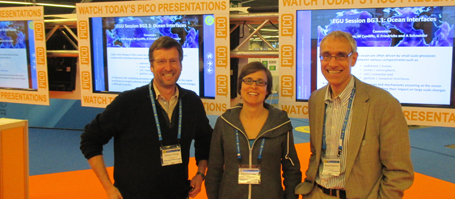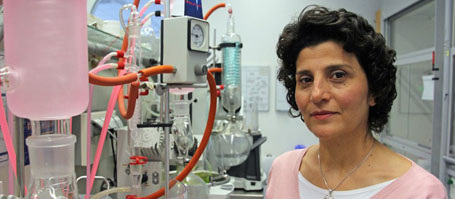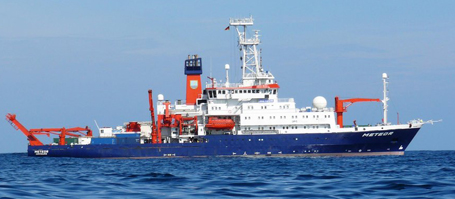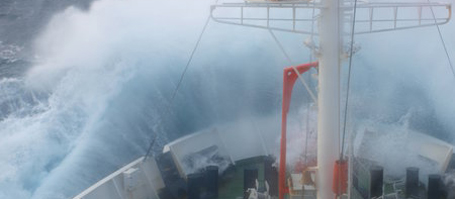Contributions ranged from laser spectroscopic investigations of marine interfaces on a molecular scale to photochemical production of volatile organic compounds in the presence of monolayers at the air-sea water interface to an improved climatology of CO2 ocean surface flux for the North Atlantic and Arctic waters. In this spirit, the presented research depicted the overall semester topic headline “From Nanoscales to Global Impact” quite nicely.
Shortly after the conference in Vienna, the two-day workshop “Marine Applications and Perspectives of Cavity Enhanced Optical Detection Schemes” took place in Kiel on 20-21 April. A group of 25 scientists coming from as far as Australia and Canada presented their ongoing research and especially their experience with “Cavity Enhanced Optical Detection Techniques” during the sessions “Field Performance”, “Isotopes“, and “Perspectives and Emerging Marine Applications”. Two highlight talks about “Chemical sensing with optical waveguides” (Loock, Queens Univ., CA) and “New developments and applications of cavity enhanced spectroscopies: from optical physics to healthcare” (Ritchie, Oxford Univ., UK) complemented the program. The list of participants comprised representatives of most of the national and international working groups actively using this new type of trace gas analyzer in the marine environment, hence the research presented gave a comprehensive overview of the current status of this field. The first day closed with active discussions during the poster session, followed by a joint dinner above Kiel’s rooftops with view onto the Firth. Emphasis on the second day was to summarize all aspects and to discuss the diverse applications, perspectives and challenges of the method in marine sciences. Thus the road was paved for a first review article with chapters already worked out as a road map for future work.
Contact:
Anke Schneider, Scientific Coordinator of the semester topic ‘Ocean Interfaces’
aschneider@geomar.de
…



